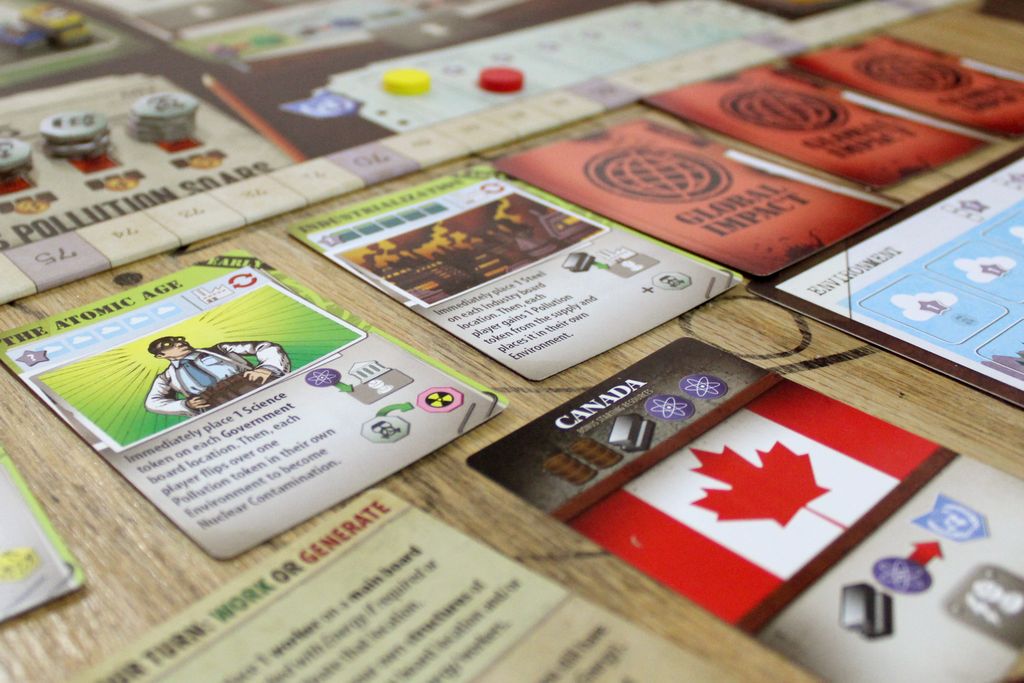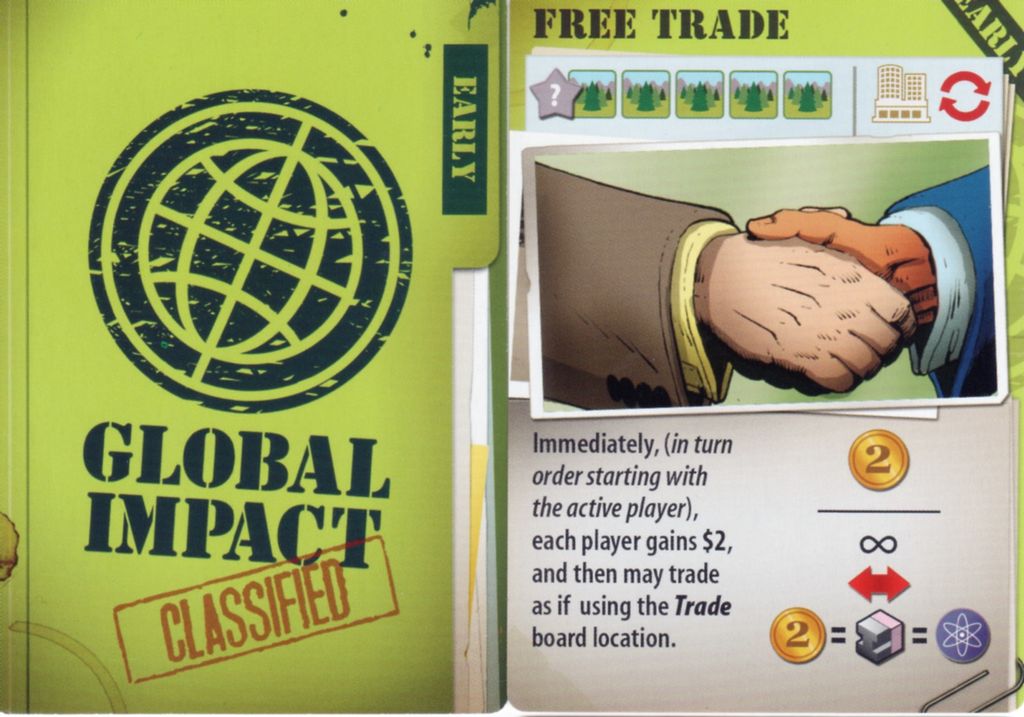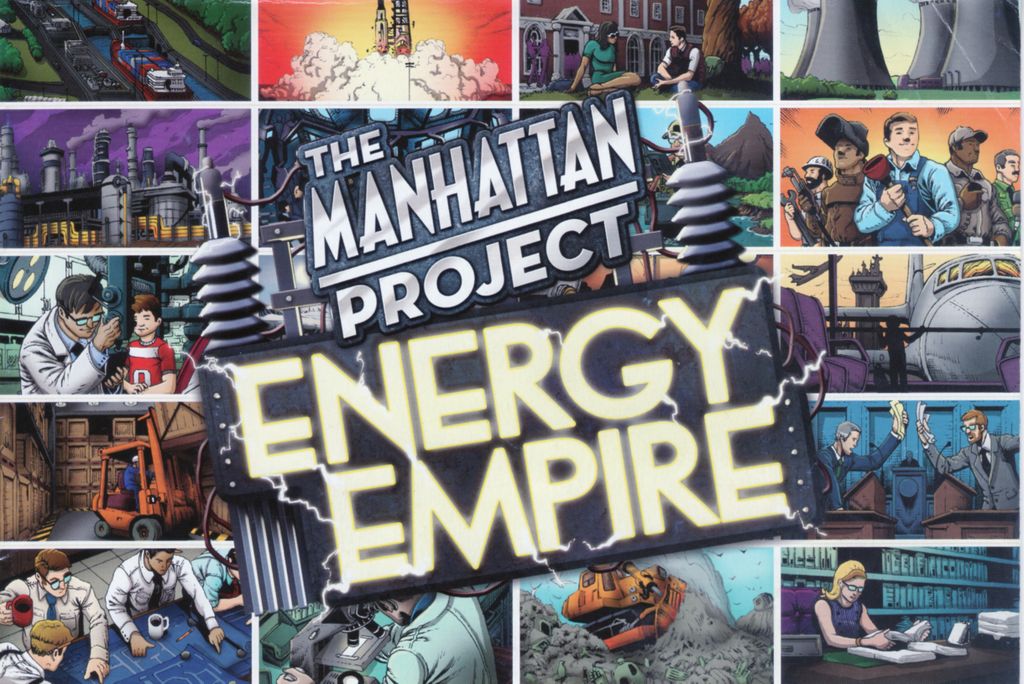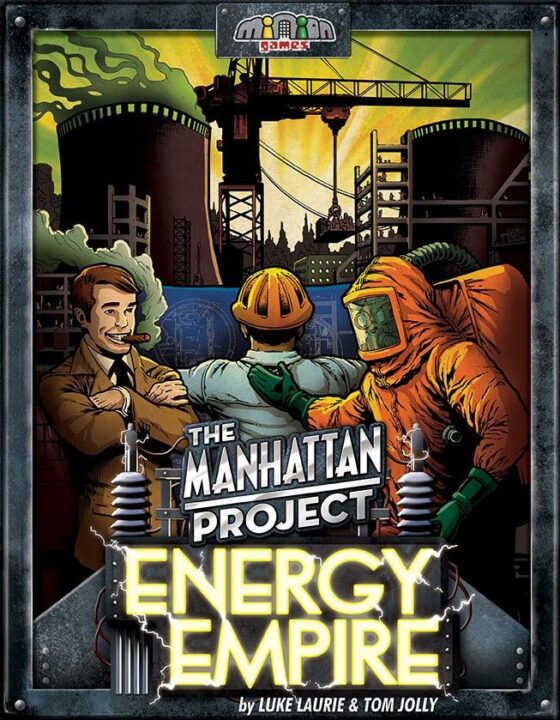Overview
Welcome to a deep dive into the world of energy and ambition with our review of The Manhattan Project: Energy Empire. As we unpack the rich tapestry of strategic decision-making and the pursuit of power (both figuratively and literally), this review will guide you through the intricate pathways of resource management, the tightrope of environmental impact, and the vibrant dynamics of player interaction. It’s an enthralling journey through mechanical brilliance and social engagement—so get ready to ignite your brain’s power plants as we explore this modern tabletop classic.
How It Plays
Understanding The Manhattan Project: Energy Empire begins with grasping the essentials of setup, gameplay mechanics, and the ultimate victory conditions.
Setting Up
The board is unfolded representing the global stage for players’ burgeoning energy empires. Components which include work locations, energy sources, and environment tokens are laid out. Each player is given a personal game board, resource markers, and a starting set of worker tokens.
Gameplay
Players take turns to either place workers and generate energy, or retrieve their workers to prepare for subsequent rounds. The juxtaposition of taking actions to expand their infrastructure and investing in cleaner energy forms a resonate strategic core of The Manhattan Project: Energy Empire. Balancing these priorities is critical for progress within the game.
Winning the Game
After a fixed number of rounds, the game concludes with players tallying their points from buildings, achievements, and resources. The player with the most points has successfully led their nation to a balanced energy portfolio and wins. It’s this precise balance between immediate choices and long-term strategy that demands thoughtful play.
Want to know more? Read our extensive strategy guide for The Manhattan Project: Energy Empire.
Mastering the Art of Allocation
First and foremost, in The Manhattan Project: Energy Empire, sharp strategies around resource management are essential for victory. Early in the game, it becomes clear that every decision counts. From the way you decide to produce energy, to the choices you make in expanding your industry—each action intricately weaves your path to success or serve as cautionary tales for future games. With unwavering focus, seasoned players balance their pursuit of energy sources, paying keen attention to conversion rates and long-term benefits.
Strategic Resource Distribution
The crux of The Manhattan Project: Energy Empire lies within its intricate resource distribution system. Each player takes the helm as a country’s leader, striving to maneuver through the logistics of energy, steel, plastic and the like, coaxing the most out of every iota of resource. The push-and-pull nature of allocation necessitates dynamic thinking and adapts well to various strategies, making each playthrough uniquely challenging.
Optimizing Each Move
Prioritizing efficiency, savvy players will deftly navigate through the multilayered infrastructure of energy generation, never missing a beat in this economic-fuelled ballet. As one conjures up their summoning of power and production, heeding the delicate dance of hoarding vs. spending resources, can itself power the triumph of an empire. This deft juggling act of resources in the board game often feels akin to a high-stakes geopolitical simulator, echoing the weight of your decisions. Invest wisely, as environmental considerations await just around the corner in the Energy Empire review.

A Delicate Ecological Dance
In The Manhattan Project: Energy Empire Review, the allocation of resources isn’t just about efficiency; it’s a delicate balancing act with nature. Players are continually tempted to expand industrially but must consider the environmental repercussions with each move.
Environmental Consciousness
Strategies within the game often pivot on sustainable growth. Utilizing cleaner energy sources can often spell the difference between thriving or contributing to ecological decay, culminating in an immersive experience that highlights the impact of environmental stewardship—or its absence.
The Green Gamble
The push-and-pull dynamic of progress versus preservation introduces a profound layer to the gameplay. Decisions are weighty, and consequences feel real, driving home the game’s theme of balance. In the forthcoming section, we’ll delve into the heart of every board game—the Player Interaction Dynamics.

Power Plays and Diplomatic Tensions
In ‘The Manhattan Project: Energy Empire,’ social maneuvering is as crucial as resource management. The player interaction dynamics breathe life into each session as individuals race to become global superpowers. Ironically, players find themselves not just strategizing, but also predicting opponents’ moves, triggering engaging exchanges.
Competition and Collaboration
The game ingeniously encourages players to keep an eye on others. Competition emerges naturally as you vie for limited spots on the main board to carry out actions. Cascading off these choices, temporary alliances can form. Certainly, knowing when to join forces and when to go head-to-head propels the game’s tension to electrifying heights.
Strategic Negotiation
Alternatively, negotiation serves as a delicate tool in your diplomatic arsenal. Each move you make can affect your rapport with the table, urging conversation, bargaining, and occasional jests. Through this lively banter, the game transcends beyond wooden tokens and cardboard – it becomes a layered dance of wits and wills.
For those seeking an immersive, interaction-heavy board game experience, ‘The Manhattan Project: Energy Empire’ stands out remarkably. It garners a strong recommendation, especially for enthusiasts longing for a game where both strategy and social engagement are paramount.

Conclusion
In wrapping up this review, The Manhattan Project: Energy Empire emerges as a captivating blend of resource management, eco-conscious strategy, and player interaction. It stands out in the landscape of tabletop gaming with its deep strategic elements that challenge and engage. The mechanics intricately capture the tug-of-war between industrial growth and environmental stewardship, making each play-through a nuanced experience. The dynamic player interactions enliven the game environment, ensuring no two games are alike. As for whether it should grace your table, with its sophisticated gameplay loop and rich social potential, it heartily earns a spot amongst anyone’s game night favorites. Not only does it ask players to plot their paths to energy dominance but also to negotiate the fallout of industrial ambition, making for an enriching tabletop experience.


